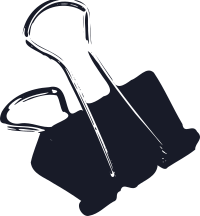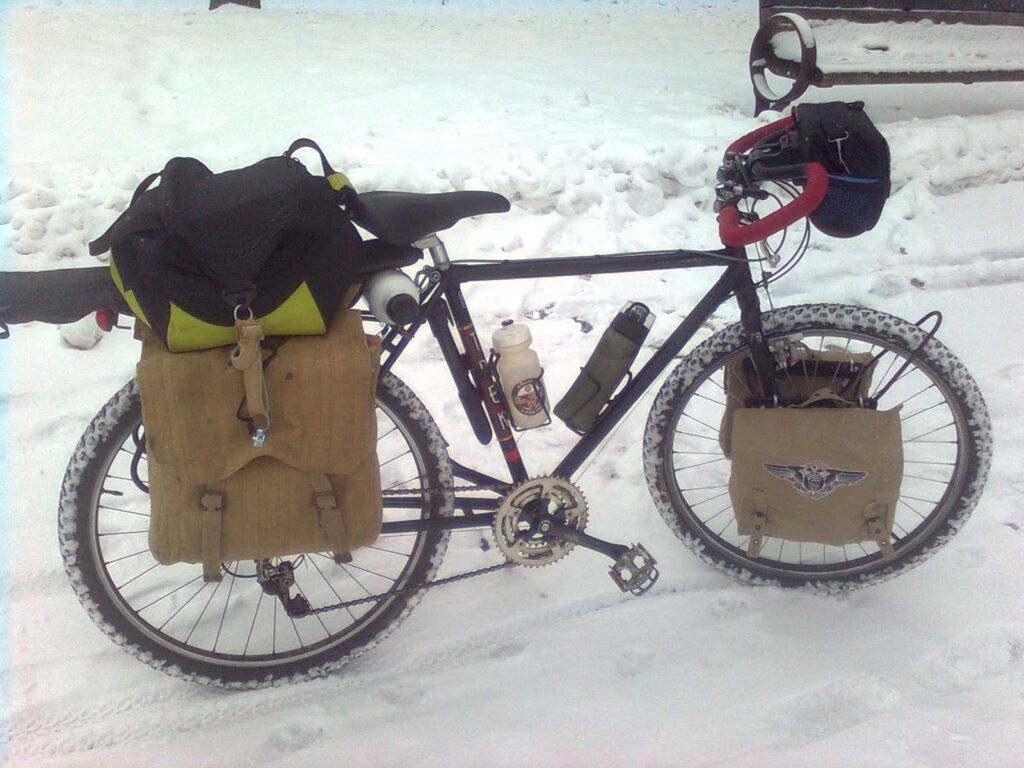I’m a big fan of bicycle touring pack lists. In the morning I leave for just three days, to volunteer for a DNR project planting native plugs by Lake Volney in Le Center, MN. So on a whim, I threw together this pack list. Everything is listed as it’s unpacked.
This winter I got my Trek 850 all fixed up for proper touring. I made panniers, got a front rack and switched over to butterfly handlebars. It’s a big leap from last year’s setup where everything was piled on top of the rear rack. The bike was hard to mount and dismount and I couldn’t stand up to pedal uphill. Now I can even ride no-handed and it feels like a normal bike even with 40 pounds of gear hanging on it.
Here’s a photo of my winter test pack. The configuration I’m using is pretty similar:

This trip came together just in the last 24 hours, since I found out they were looking for volunteers for this project. It’s only 3 days, so my list is not quite typical.
So, here’s a list of what I’m taking with me:
On the bike:
- Two water bottles
- Fuel canister for cooking
- Tire pump
(I use HEET automotive gas line something-or-other as my cooking fuel, and I think it’s hilarious to go to the gas station and fill up a little tank that’s strapped to my bike — actually just an aluminum water bottle — with HEET.)
Strapped on top of the rear rack:
- Tent poles
- Tarp
- Sleeping Bag
- Gym bag containing extra water, plastic bags, all my food and some gardening tools.
Rear Pannier #1:
- Toiletry kit with bug balm, sunscreen, Dr. Bronner’s soap, deoderant, toilet paper, first aid kit, hand lotion, pills, vaseline, a marker, alcohol wipes, toothpaste, toothbrush, nail clippers, razor handle and blades, and a comb.
- Swim kit with sandals, swimsuit and a camp towel in a cloth drawstring backpack (which is useful for hikes as well).
- Waterproof bag containing a blank notebook, a book on Environmental Literacy I’m reading, a bird fieldguide and a wildflower fieldguide.
- Self-inflating Therm-a-rest mattress.
- Flask of “nightcap.”
Rear Pannier #2:
- Ziploc of several bandanas, socks and underwear, as well as a hat.
- 2 spare bike tubes (one for each valve type)
- My tent.
Front Pannier #1:
- Rain Pants
- Long khaki hiking pants
- My DIY nested cook kit with an enameled steel mug, pot support, windscreen made out of duct pipe, stove made out of a beer can and a travel size french press. There’s also a small scotchbrite pad for cleaning.
- In one small pocket I have a ziploc containing 6 firestarters made out of cotton balls and petroleum jelly. In the other small pocket I have a travel can opener.
Front pannier #2:
- rain jacket
- Fleece vest
- Chain oil and a rag together in one ziploc
- And one large ziploc I call the “coffee can:” miscellaneous tools and hardware–spare bolts, tire levers, a presta valve converter, batteries, matches, patch kit, caribiners, etc.
- In the small pocket, i keep a bicycle multi-tool.
Handelbar bag:
- Sunglasses (or glasses — whichever I’m not wearing) in a case.
- Camera
- Binoculars
- Chargers
- Pens
- Lighters
- Headlamp
- My Minnesota Master Naturalist pin
- Spare bike key and a small folding knife on a lanyard
- Then I have something I got from Target on clearance called a “travel wallet.” It’s a 5×7″ zippered pouch that fits my bank card, cash, YWCA card, ID, etc. as well as my 7″ tablet computer, which I’m using to view PDF’s of my route maps, check the weather, and read an essay by Timothy Morton called “Ecologocentrism: Unworking Animals.”
In my food collection I have the following things:
- Coffee
- Dehydrated pea soup with bacos and red pepper flakes. (the bacos soften up when cooked and have a ham-like flavor and texture — and they’re vegan.)
- Apple Fritter bread for breakfast.
- Baguettes (bought fresh when I can)
- Baby bel cheese
- Wheat thins
- Nutella
- Olives
- Instant potatoes
- Fruit
- I also have my silverware in here rather than with the cookset since most of the time I won’t be cooking.

